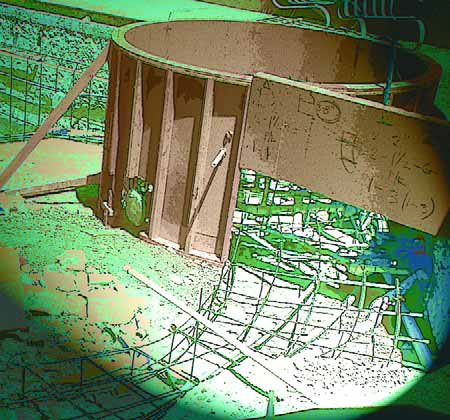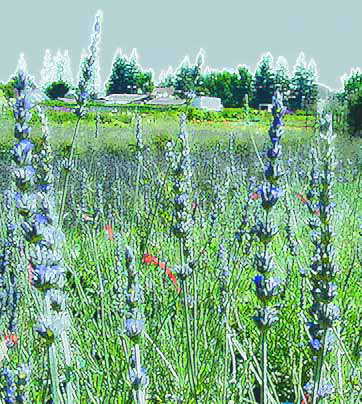ARTICLES
Advance Search
Aquatic Health
Aquatic Health, Fitness & Safety
Around the Internet
Aquatic Culture
Aquatic Technology
Artful Endeavors
Celebrity Corner
Life Aquatic
Must-See Watershapes
People with Cameras
Watershapes in the Headlines
Art/Architectural History
Book & Media Reviews
Commentaries, Interviews & Profiles
Concrete Science
Environment
Fountains
Geotechnical
Join the Dialogue
Landscape, Plants, Hardscape & Decks
Lighter Side
Ripples
Test Your Knowledge
The Aquatic Quiz
Other Waterfeatures (from birdbaths to lakes)
Outdoor Living, Fire Features, Amenities & Lighting
Plants
Ponds, Streams & Waterfalls
Pools & Spas
Professional Watershaping
Structures (Editor's Notes)
Travelogues & History
Water Chemistry
WaterShapes TV
WaterShapes World Blog
Web Links
Around the Internet
Aquatic Culture
Aquatic Technology
Artful Endeavors
Celebrity Corner
Life Aquatic
Must-See Watershapes
People with Cameras
Watershapes in the Headlines
This project is an example of what can happen when you work under ideal conditions. Set in an affluent enclave in Paradise Valley, Ariz., on a spectacular five-acre estate, the home is a model of Old West styling, with the exposed wooden supports and smooth plaster exterior you'd expect to see in a house built in the Arizona Territory in the 19th Century. It's also graced with all the comforts of a modern estate home. The homeowners are repeat clients of mine - and good friends as well. They've owned other properties in the area, and I've had the pleasure of working with them on three other watershaping projects in addition to the one shown here - perhaps our finest collaboration so far. They love art of all sorts, and when it comes to a home's exteriors and especially to its water elements, they view the work as pure creative expression. Typically, their tastes run to the modern, which meant this home was something of a departure for them. It came with beautiful grounds, a winding driveway, gorgeous trees, a man-made brook and pond, all sorts of beautiful views - spacious, yet secluded, an oasis in the midst of crusty, arid, mountainous terrain. The place also had a small, courtyard pool. Typical of work done 20 or 30 years ago, it was something the clients knew they wanted to
It's right up there for longevity in the history of building materials with marble and concrete: The use of glass tile, in fact, dates to the Roman Empire and traces its path through widespread use in Byzantine art in the eastern Mediterranean before finding its way back to a primary role in the art and architecture of Renaissance Italy. From ancient times forward, glass tile has always been associated with beautiful and enduring works of art. Now enhanced by some modern-day manufacturing practices that serve to bring out its incredible gem-like features, the material still holds faith with all those centuries of tradition while reaching
As modern building materials have been developed, we humans have been remarkably proficient at applying them in ways that go well beyond the vision of their inventors. Such is the case with roofing membranes, which now are widely used as liners for backyard streams and ponds. It's understandable that landscape designers and contractors have taken to these rubber liners. After all, they make pond and stream construction inexpensive and easy. But from the perspective of the Japanese gardener or quality watershaper, convenience and affordability alone do not qualify a material for use. Instead, standards of durability and enduring
Just as with species in the animal kingdom, architectural construction styles and techniques evolve over time, adapting to changes in the environment. In the case of fountains, these evolutionary transitions have been both complex and indicative of broader trends. Ancient wellsprings, for example, eventually gave way to decorative fountains with intricately carved stone sculptures. More recently, monolithic block, walled and stepped fountain forms have held sway. It's not much of a stretch to say that the latest significant "mutation" in this remarkable lineage is the dry-deck fountain: At a time when open space is at a premium and the public is being invited as never before to interact and participate in the architectural landscape, dry-deck fountains may well be the
"True form is always organic in character." -- Frank Lloyd Wright I never studied Frank Lloyd Wright in school, but I've been intrigued by his work and design philosophy for years and had long intended to fill this gap in my education on my own. But that's proved to be easier said than done because of the huge number of books about him: There are simply so many of them that I never knew where or how to start. This dilemma came to an abrupt end when I ran across a book written in Wright's own hand. That book, An American Architecture, was first published in 1955 by Horizon Press and was reissued by Barnes & Noble in 1998. Edited by Edgar Kaufmann, the text is a compilation of Wright's notes, speeches and lectures spanning
It's not too unusual to replace all of the plumbing, equipment and electrical lines as part of a swimming pool renovation project. It's quite another story, however, when you need to make sure all of it happens without disrupting the deck surrounding the vessel. As mentioned in my last two "Details," that's precisely what we've been asked to do in renovating a 70-year-old pool in the historic Los Feliz neighborhood of Los Angeles. The presence of a beautiful, valuable, imported limestone deck means that we've had to do all of our work from inside
Few plants have been written about, lingered over and so passionately associated with fragrance, healing and serenity as lavender. Beyond stunning beauty of the sort seen in the vast purple fields of Provence, lavender has spread worldwide, leaving a trail of exquisite aroma and touching everything from our imaginations to our health. Some say lavender has pain-killing, antiseptic and skin-rejuvenating properties and that it's great for toning skin, fighting acne and soothing burns and cuts. This versatile plant is used as well to infuse perfumes, oils and soaps, and I know from my own experience that it makes a great marinade for lamb and adds
During the five years I've been writing this column for WaterShapes, I've been asked by a number of people how I manage to find the time to write this column, make presentations at trade shows, teach at Genesis 3 schools and conduct my own design/consulting business. I get the distinct impression that these questions have much less to do with curiosity about the power of time management than with questions about why I'd even bother to extend my focus beyond my primary business of
Coming up in New Orleans - first during the American Society of Landscape Architects' Expo (November 1-2) and later that same week at the International Pool & Spa Expo (November 5-6) - we'll be giving show attendees a special opportunity to
One of the real tricks in any art form can be the challenge of exercising restraint. Bigger isn't always better, and both scale and size do matter. In other words, just because you can create something grand, it doesn't always mean that you should. This principle of proportionality has a sharp, specific meaning in the world of the custom watershaper, especially when clients ask for something that is oversized for the property or more elaborate than called for by the setting or surrounding architecture. We all know where it comes from: Clients have seen something they like, and it





















